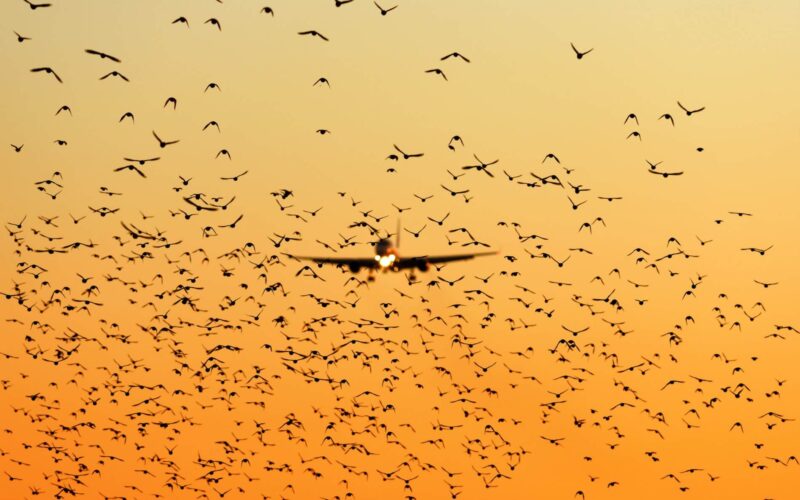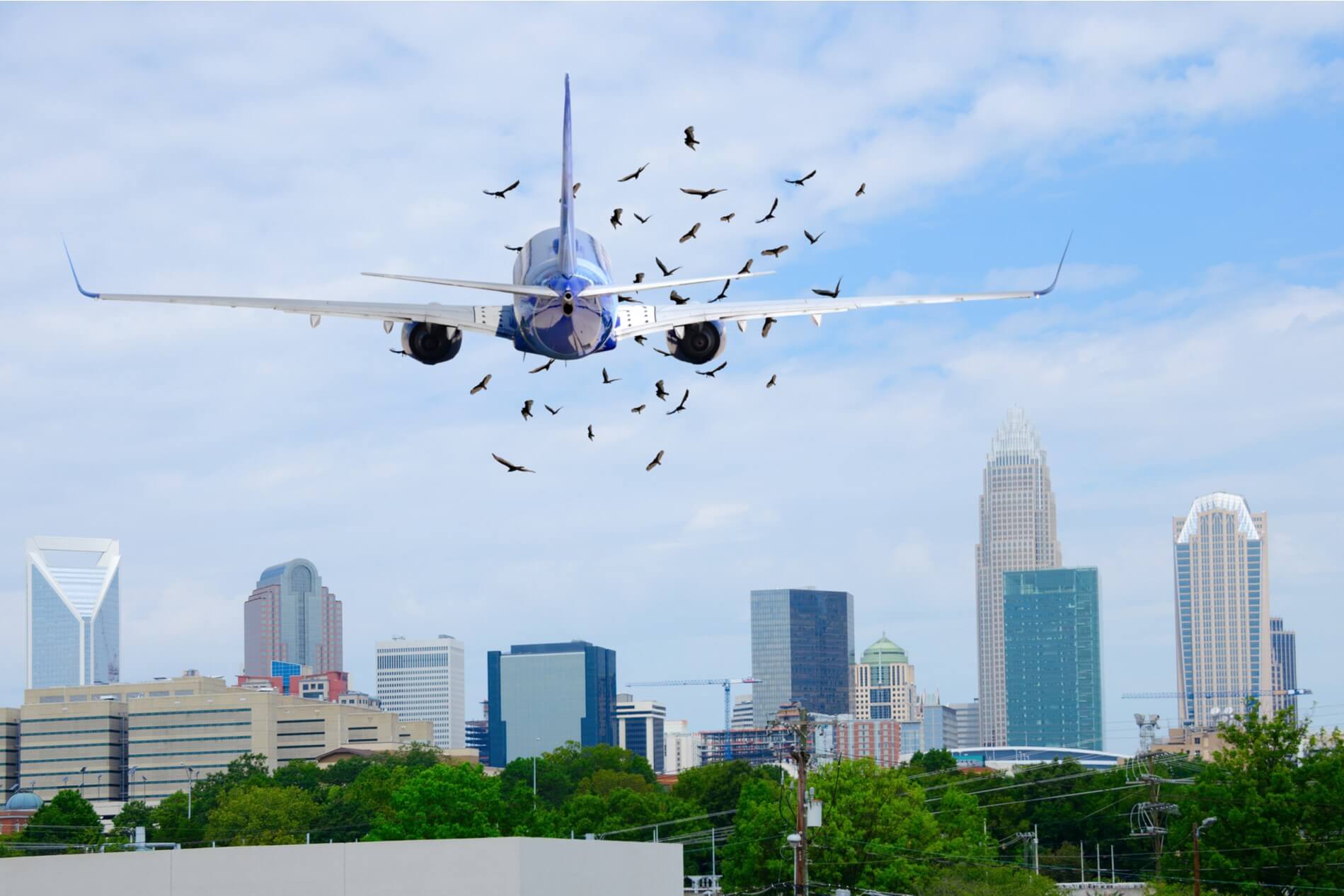A bird strike occurs when a moving airplane collides with a bird. The bird can hit any part of an airplane and in all cases it will be called a bird strike. When an aircraft crashes with another type of animal, like a bat, coyote or even deer, such an incident is called a wildlife strike. According to the latest reports, around 98% of wildlife strikes are bird strikes.
How common are bird strike incidents?
Over the past two decades, bird strikes were related to more than 106 civilian deaths worldwide, according to per British and Canadian researchers. Such volume is related to a growing number of flights, changing birds’ migratory patterns, better reporting of bird strikes, bigger, faster, and quieter turbofan-powered aircraft, which give birds less time to get out of the way. Experts also assume that bird strike incidents cause about $1.2 billion in damage per year. From 1990 to 2017, more than 194,000 wildlife strikes had been reported within the US alone. From 1988 to 2017, a total of 263 civilian aircraft were either destroyed or damaged beyond repair due to wildlife strikes around the world.
As birds fly at lower altitudes, most frequently plane collisions with them occur during a takeoff, initial ascent approach, or landing. According to the International Civil Aviation Organization, 90% of bird strike incidents happen around airports. As per the Federal Aviation Administration, about 63% of the bird-related accidents occur during daylight hours, because birds typically fly during the day.
The majority of bird strikes are caused by unknown bird species. Perching birds, sparrows, and starlings account for 22% of strikes. Shorebirds, gulls, and terns cause around 11% of bird strikes. Larger gulls that usually fly in big flocks are more often involved in incidents where significant damage is caused. Raptors, such as hawks, eagles, and vultures, account for only 9% of bird strike incidents, but pose a greater threat to flight safety.
Size of aircraft matters
When a bird ꟷ even a small one ꟷ hits a plane, you would hear a bang sound. If a small bird is sucked into an engine, it usually goes through the core of the engine and reaches air conditioning systems. People onboard might smell an odor similar to roasted chicken.
If a bird is flying very close to the windows, you might also assume that some of them might hit either wings, engines, or the stabilizer of the aircraft. In such a case, the aircraft crew tells air traffic controllers that they might have a bird strike and there might be a need for the so-called bird strike inspection upon the arrival. If the plane crew thinks that there might have been a bird strike, first they would check the engine parameters to make sure that the engines are not fluctuating.
By Mike Focus
The damage from the bird strike depends on several factors. First of all, it is the size of the aircraft. Smaller planes and propeller-driven machines are more likely to sustain structural damage, such as penetration of windscreen, control surfaces, or empennage. The windscreen penetration could also potentially injure pilots or other people on board, which may lead to loss of control and have disastrous consequences.
Large aircraft usually sustain engine malfunction or even complete failure if a bird flies into them. More than ⅓ of bird strikes involve engines. If a bird is sucked into an engine, it may lead to severe damage to the first compressor rotor (fan blades). This can result in severe vibration, loud bangs, and a total loss of engine thrust. Bird strikes can inflict damage to not only on the engines of a large aircraft but to parts, including wings, nose, windshield, and fuselage, too.
During landing or takeoff, bird strikes can cause damage to extended landing gear, which can lead to sufficient malfunction of brakes or nose gear steering systems. In turn, it can result in directional control problems during a subsequent landing roll. In rare cases, aircraft collision with birds can occur at higher altitudes. This may lead to structural damage to the aircraft hull and rapid depressurization.
It is also important how many birds impact with the aircraft. For instance, ducks, geese, and swans account only for 2% of bird strike incidents. However, since these birds tend to fly in massive flocks, they can cause more significant damage to the plane.
How airport administration prevents bird strikes?
A complete engine failure after a crash with a feathered creature can severely compromise flight safety. Therefore, to prevent or at least to minimize the risk, airports are taking steps to try to stop bird strikes.
Complete engine failure due to a bird strike can severely compromise flight safety. Therefore, to prevent or at least minimize the risk, airports are taking steps to prevent damage. Certain steps are taken to prevent damage to some extent.
The first thing that an airport’s administration can do is to reduce bird habitats around the airport and its runway(s). Open areas of grass and water, shrubs, trees provide food and roosting sites for birds. For this reason, airports tend to cut down trees with nests, reduce rainwater pooling, and substitute cattle grazing for grain crops.
Migrating birds that follow well-defined flight paths can create a hazard if their flight paths are near an airport. To prevent that, airport administration broadcasts bird distress signals or uses pyrotechnic bird-scaring cartridges. In fact, some bigger airports can also use trained peregrine falcons to keep gulls and geese away from the landfills. Large flocking birds can also be detected using specialized, ground-based radar equipment.
However, the responsibility to minimize the bird strike problem falls not only on airports. Before aircraft are cleared for usage, they undergo a serious set of tests. They include bird strike engine testing as well.


